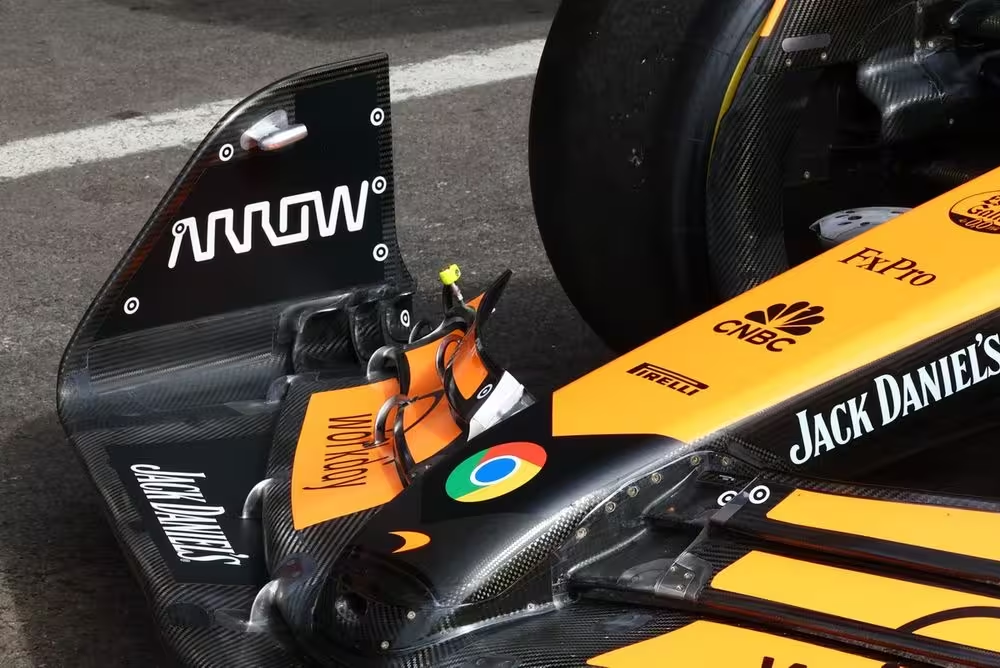The first images of new flexi-wing checks that are being conducted by the FIA have appeared ahead of Formula 1’s Belgian Grand Prix.
As exclusively revealed by Autosport, the FIA has begun an analysis process to help it better understand the dynamics at play with how teams are flexing their front wings.
From this weekend’s event at Spa-Francorchamps, the FIA has requested that selected teams fit a special 4K video camera in a location on their nose to capture images of front wing movement during Friday practice sessions.
To help assist with the analysis, teams have to place a number of reference dots on the front wing elements and endplate.
When the video footage is downloaded after practice, the dots help the FIA to better track wing movement.
It is hoped that the analysis that will be conducted over the next few weeks will help boost the FIA’s knowledge of the dynamics at play with front wing, with a view to then potentially making changes to the regulations for 2025.
McLaren MCL38 technical detail
Photo by: Giorgio Piola
As the above exclusive image shows, the FIA requirement includes three dots on the flaps and six on the endplate.
These dots are 20mm in diameter and their locations have been specified by the FIA, in order to establish a number of movement vectors that might be resulting in excessive deformations.
The issue of flexi wings has resurfaced this year because teams have realised that there are benefits to be had in terms of car balance by having some degree of aero elasticity at play.
This can help dial out the inherent characteristics of low-speed understeer and high-speed oversteer that are an inherent problem with current ground effect machinery.
Watch: F1 Belgian Grand Prix – News from Spa’s Paddock
Mercedes was quite open that having a degree of flexibility with its new front wing that first arrived at the Monaco Grand Prix was beneficial to car balance, while being within what was allowed by the regulations.
The team’s technical director James Allison explained at the time: “I think that all of us are trying to ensure that we pass the FIA’s flexibility test. They put loads on, and you’ve got to not move by more than an amount.
“But provided you can do that and provided your wing is just bending like a thing bends when it has load on it, then there’s no drama to be faced with the governing body.”
Click Here to Read the Full Original Article at Autosport.com – Formula 1 – Stories…

